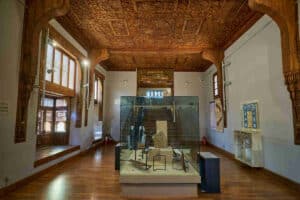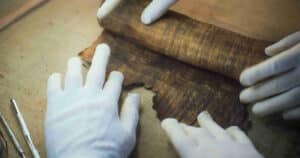It is a monument known all over the world, which anyone has seen hundreds of times in photographs and some lucky ones (maybe you), also in person. But in spite of its fame, most people do not know or have never noticed the following curiosities of the Great Sphinx of Giza that amplify its myth, if possible.
#1. The body of a lion and the head… of a pharaoh!
The Egyptian sphinx prototype presents this fantastic being with a lion’s reclining body and human head (different from the Greek prototype, with wings and in a more elevated posture). But in this case, it is not just any head, but the head of the pharaoh, since it shows the royal scarf. nemes. Some experts believe that it is even the representation of the pharaoh Kephren, promoter of the second Pyramid of Giza.
#2. The largest… and the oldest?
There is no doubt that the Great Sphinx of Giza is the largest of Ancient Egypt, with more than 73 meters long, more than 19 m wide and more than 20 m high. 73 meters long, more than 19 m wide and more than 20 m high.. There is more doubt as to whether it is the oldest. In any case, it is among the earliest, since this fantastic being began to spread in the times of the Dynasty IV to which Kephren belonged.
#3. No nose… but with a tail
As you may have noticed, the nose is missing. Legend has it that this is a malfunction caused by the Sufi leader Muhammad Sa’im al-Dahr, in the 14th century, who, fed up with the supposedly idolatrous cults he receivedwho, fed up with the supposedly idolatrous cults he received, disfigured his face, disfigured his face. On the other hand, it does have a tail, although for many it goes unnoticed: it rests on the ground, surrounding its body, and is visible from behind.
#4. The Great Sphinx of Giza had another color
Although the color of the yellowish limestone suits this character like a glove, as it is also the natural color of a lion, what many experts maintain is that it was originally a lion. coated with a deep red (body and face)while the nemes royal handkerchief would have the usual black and yellow colors. If true, the effect must have been truly spectacular.
#5. A historical trail between its legs
When we observe the Great Sphinx from a central position, we notice that between its forelegs there is a stele: the Dream Stele. It is much later than the sphinx era, but equally historical and relevant: it was placed by the Pharaoh Thutmose IV (XVIIIth Dynasty)as a sign of legitimization of their power. And in fact, you can see a representation of the pharaoh himself, in act of adoration to the Great Sphinx of Giza. That invites us to think that this gigantic statue had at the time a ritual false beard (usual in the attire of the ancient pharaohs), as shown by the relief of the stele.




